Ethiopia produces one of the best coffee in the world. Those beans are just phenomenal – fruity, smooth, and with a nice bright acidity. Panama, Colombia, and Hawaii are also up there for top-notch coffee-growing regions. There’s no single “best” coffee country, though! Taste is subjective, and different regions excel in different aspects.
Coffee is grown in over 50 countries around the World, with its origins traced back to Africa in the 10th century. Since then, it has spread across the globe in what is now known as the “bean belt”.
Deciding which country has the best coffee is no simple task. It’s not as straightforward as picking the world’s top football player based on their performance statistics.
It’s a multifaceted, subjective matter depending on individual preferences, which can significantly differ from person to person.
Some prefer chocolaty and bitter notes, while others prefer a fruity and acidic cup. The aroma and texture of the beans also play significant roles in determining their appeal. There is no one-size-fits-all answer in terms of coffee taste – it all boils down to personal choice.
So it’s very hard to agree on which country has the best coffee. But we all agree that the taste should not be burnt, overly bitter, or sour, and it should have a decent aroma.
Top 9 Countries with the Best Coffee
The best quality coffee beans are grown in tropical regions near the equator known as the “bean belt .” Some regions are known to produce higher-quality coffee than others because of their geographical characteristics.
The final taste of coffee depends on so many factors such as soil chemistry, weather conditions, average rainfall, growing conditions, types of seeds, and the altitude above sea level.
Even the same coffee tree grown in different regions will not produce the same type of beans because of different geographical factors.
Let’s take a look at the list of the top 9 countries that produce the best coffee in the World
1. Ethiopia – The birthplace of Coffee
Ethiopia is the fifth-largest coffee producer and one of the finest coffee-growing regions in the World. As the birthplace of the bean, this East African nation has been cultivating magical coffee for centuries.
Ethiopia is home to several renowned coffee regions, each offering its own distinctive flavor profile. The lush, high-altitude Yirgacheffe zone is arguably the cream of the crop, producing exceptional arabica beans renowned for their intoxicating floral aromas and vibrant, well-balanced fruit notes.
Then you’ve got Sidamo, a fertile highland area famed for its rich, full-bodied brews exhibiting crispy acidity and fruity notes. On the other end of the spectrum, the ancient Harrar region yields spicy, wine-like coffee exploding with intense berry flavors.
Regardless of the region, the sweetness, fruity flavors, and presence of the natural carbohydrates in the coffee beans from Ethiopia make it the country with the best-tasting coffee Worldwide.
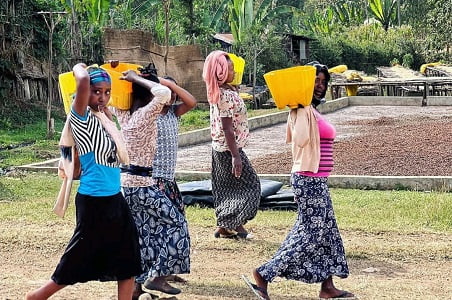
2. Panama – The Geisha variety
When it comes to world-class coffee, Panama is in a league of its own thanks to its famous Geisha variety. This coffee has won many coffee competitions and has a cupping score of 94, making it one of the top coffees in the world.
The Panamanian version of Geisha is renowned for its incredibly complex floral and fruity notes. We’re talking delicate jasmine aromas coupled with luscious flavors of mango, peach, and raspberry. There’s also this unique natural sweetness that makes Geisha so addictively delicious.
What sets Panama’s Geisha apart is the country’s perfect growing conditions. The cool mountain microclimates, breezy terrain, and volcanic soil create the ideal terroir for nurturing these prized beans’ distinctive qualities.
I have to admit, the first time I tried a top-notch Panamanian Geisha, I was blown away. That bright, clean, multi-layered taste was like nothing I’d ever experienced before.
Panamanian coffee growers have established the country’s reputation for cultivating this extraordinary variety from boutique farms like La Esmeralda to Petersons Estate.
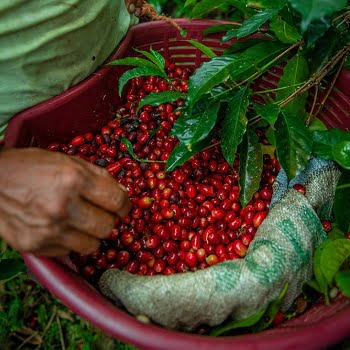
3. Indonesia – Sumatran Coffee
Indonesia is well-known for producing some pretty fantastic coffee beans, but the real star is Arabica Beans from the island of Sumatra.
I’ve had the pleasure of trying Sumatran coffee and it’s an experience like no other. The unique wet-hulling processing method gives the beans this deep, earthy, and spicy flavor that you just can’t find elsewhere.
Sumatra has ideal coffee growing conditions – rich volcanic soil, the perfect tropical climate, and smallholder farms cultivating arabica at high altitudes.
The most famous varieties are Mandheling with its notes of chocolate and licorice, the intensely flavorful Gayo, and the smooth, low-acid Lintong. While some might find the bold and full-bodied taste of Sumatran coffee a bit overwhelming, for strong coffee lovers like me it’s an absolute treat.
Not all Indonesian coffee is created equal, though! There are some not-so-great commercial Robusta and low-grade Arabica stuff out there. Always seek out specialty-grade beans from reputable farms and roasters in the Sumatra Region.
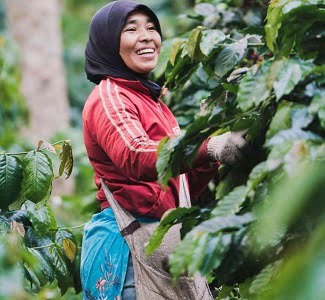
4. Hawaii – Kona Coffee
Hawaiian coffee, particularly the famous Kona variety, has fascinated coffee enthusiasts Worldwide with its exceptional flavor and quality.
Kona coffee is renowned for its rich, smooth flavor with notes of chocolate, caramel, and a lovely floral aroma. The volcanic soil and ideal climate really allow these arabica beans to flourish.
One variety that stands out is the prized Kona Peaberry – these oval-shaped beans pack an extra punch of oils and flavor. These beans are super rare and have a cupping score of over 85, and usually sell for over $100 per pound.
You also can’t go wrong with Ka’u coffee from the southern side of the island. While not as famous as Kona, Ka’u holds its own with a robust, full-bodied profile.
The other Hawaiian islands can produce some decent beans too, but for that classic rich and full-bodied flavor profile you really want to look for coffee from the main Big Island of Hawaii.
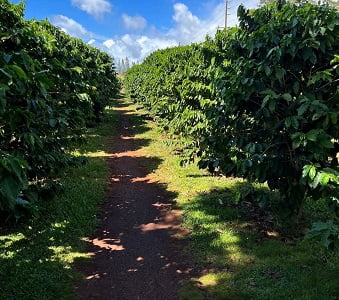
5. Jamaica – Blue Mountain Coffee
Jamaican Blue Mountain coffee is known around the World for its smooth, well-balanced taste with a hint of jam-like sweetness and floral notes.
I had the pleasure of trying some authentic Blue Mountain coffee, and it blew me away with its subtle berry-like acidity and sweet and clean flavor profile.
What sets Blue Mountain apart is its unique terroir and unique production process. The cool, misty climate and nutrient-rich volcanic soil are just perfect for the beans. Moreover, at most farms, every single cherry has to be hand-picked and sorted to ensure only the highest quality makes out.
The Jamaicans are sticklers about protecting Blue Mountain’s prestigious name too. Only beans from that specific region certified by the government can be labeled as 100% Jamaican Blue Mountain Coffee.
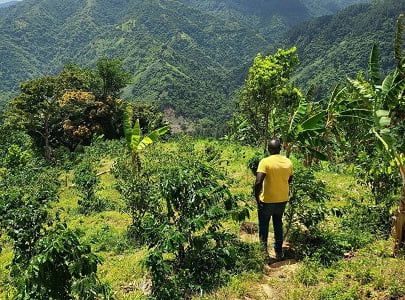
6. Yemen – Mocha Coffee
Yemeni coffee has a rich history and is grown in the country’s fertile highlands for centuries.
This Middle Eastern nation is the birthplace of the original “mocha” or “mokka” coffee beans that lent its name to the beloved chocolate-coffee beverage “cafe mocha“.
Yemeni coffee is famous for its strong flavors. When brewed, it offers a full-bodied experience with hints of wine, chocolate, and a mix of fruity and spicy scents.
The most renowned coffee blend historically consists of Yemeni Mocha Beans blended with beans from Java Island, Indonesia. This classic blend combines the winey, fruit-toned acidity of Yemeni Mocha beans with the intense and full-bodied earthiness of Indonesian Java beans.
Unfortunately, Despite Yemen’s lengthy coffee heritage and reputation for quality, ongoing political instability has made it increasingly difficult (and pricey) to obtain authentic Mocha beans in recent years.
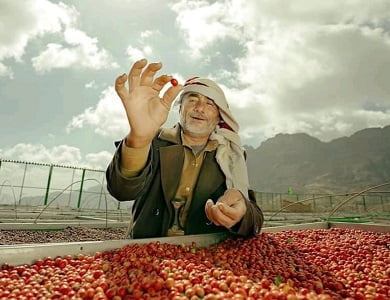
7. Colombia
Colombia is a prime location for growing exceptional coffee beans all thanks to its ideal elevation, ample rainfall, and perfect temperature. From the lofty peaks of the Andes Mountains to the sultry Caribbean coast, Colombia’s diverse microclimates and terroirs yield an incredible range of flavor profiles.
You can find exceptional coffees throughout Colombia’s 22 coffee-producing regions. Up north, you will get mellower cups with lower acidity and heavier bodies. Down south, those high altitudes around 2,000 meters produce denser beans packed with fruity complexity.
Good quality Colombian beans have a medium body and a fresh, fruity aroma with citrus notes.
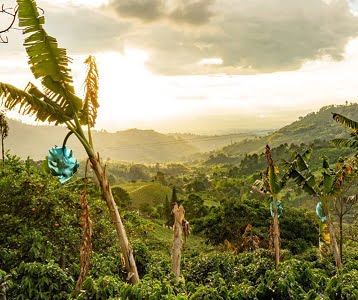
8. Brazil – Top coffee producer in the World
Brazil is not necessarily renowned for producing the world’s most premium or complex coffees but is a powerhouse in the global coffee industry. As the largest producer, responsible for around one-third of the total supply, Brazilian coffee is ubiquitous and beloved worldwide.
There are many large coffee farms across the country and has a good infrastructure for transporting tons of coffee across the country and Worldwide.
From the tropical coastal lowlands to the temperate inland plateaus, coffee is cultivated across seven main growing regions in Brazil. While quality certainly varies, you’ll find everything from smooth and nutty typica varietals to substandard commercial-grade Robusta to bold and chocolatey bourbon cultivars from the highest elevations.
While it may not have the pedigree of famous origins like Hawaii or Panama, you can’t deny that Brazil plays a hugely important role in supplying consistent, affordable, high-quality coffee to the world.
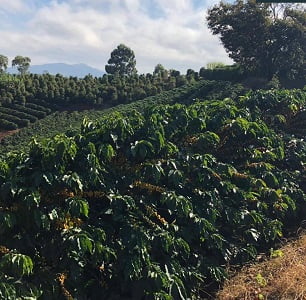
9. Veitnam – Best for the Robusta
Vietnam is the world’s second-biggest coffee producer, and the vast majority of its crop is the robusta variety.
Robusta beans are often grown at lower elevations and in warmer climates, primarily in Asian countries like Vietnam, Indonesia, India, and Thailand.
Vietnam is one of the world’s largest producers of Robusta coffee, and they are often regarded as the best in Robusta production.
Sure, Robusta beans are generally considered inferior to Arabica beans due to their harsher and more bitter taste. They are still widely used in coffee blends and appreciated by those who enjoy a strong and intense coffee taste.
Robusta is also an important element in Authentic Italian Espresso and specialty coffee drinks, contributing to a thick crema layer and a more full-bodied texture.
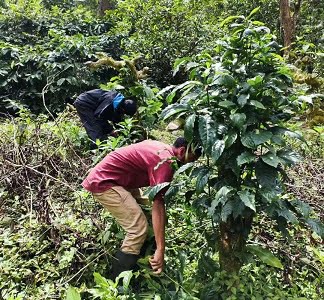
What are the qualities of the best coffee?
Professional coffee tasters or cuppers define the quality of coffee based on the following ten characteristics.
- Aroma: The Aroma of coffee is directly related to its flavor. A rich and full-bodied cup will have a deep and smoky aroma, whereas a tangy and acidic one will have fruity and wine-like notes.
- Flavor: The combined effects of sensation felt by the taste buds after taking a sip defines the flavor profile of coffee. Some beans have dominant fruity flavors, while some have dominant chocolaty and nutty flavors.
- Aftertaste: The coffee is graded good if it has a pleasant and long-lasting aftertaste and graded poorly if it has a displeasing or overly bitter aftertaste.
- Acidity: Acidity gives life to a cup of coffee, and it is known as brightness when balanced. Coffee without any acidity can be pretty bland. But, if coffee is too acidic, it can taste sour which is certainly not desirable.
- Body: The body is the taste and texture our tongue feels after sipping coffee. A full-bodied cup of coffee is thick, heavy, and oily. On the other hand, thin-bodied coffee is watery and has fewer oils and flavors.
- Uniformity: Uniformity refers to smoothness and consistency in the taste of coffee. The taste and flavor profile of good-quality coffee beans should be uniform and consistent.
- Sweetness: Sweetness is the desirable quality in the taste of coffee, and it represents the presence of certain carbohydrates in the beans.
- Defects: Too many variations in the size and color and too much moisture are referred to as negative qualities of beans. The defects result in unpleasant flavors and quality.
- Balance: The overall taste of the coffee should be balanced. It must not be too much acidic or bitter.
These qualities are not absolute; in the end, it all comes down to personal preference. It is likely that one quality is preferred by some individuals and hated by others.
What is the most expensive coffee?
Kopi Luwak is the most expensive coffee in the World. It is mostly produced in Indonesia and is famous for its unique taste and processing method.
Kopi Luwak coffee is made in a pretty interesting way by Asian palm civets. These animals eat the red cherries of coffee, digest them, and then defecate them. The cherries are then collected by coffee farmers who wash and process them.
Kopi Luwak has a unique taste because of two facts.
- Palm Civet only chooses the best coffee cherries to eat.
- The digestive enzymes of civets do the magic while breaking down the coffee bean.
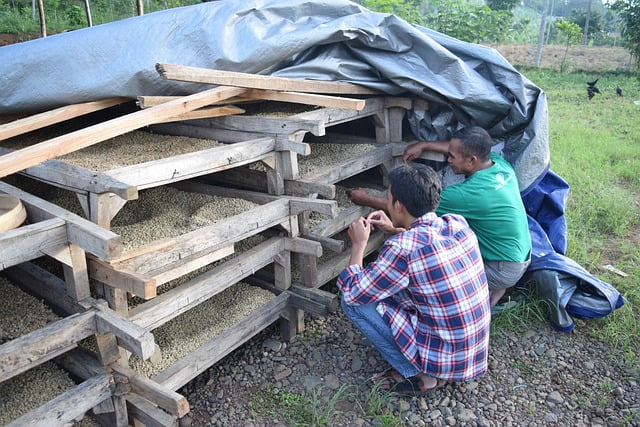
Final Thoughts
And there you have it, folks – our picks for the top contenders in the global race for coffee supremacy. From Ethiopia to Panamanian Geisha, we broke down what makes each nation’s brews shine.
But hey, I’m curious – did I hit your favorites or miss a hidden gem? Share your top coffee countries in the comments below!
FAQs
Which country produces the Most Coffee?
Brazil is by far the largest producer of coffee in the world. The South American country produces over 40% of the global coffee output.
Besides Brazil, the countries that produce the most coffee are Vietnam, Colombia, Indonesia, and Ethiopia respectively.
Which Country drinks the most Coffee?
Finland and Norway are the top two coffee-consuming countries in the World. Other countries with notable coffee consumption include Sweden, Iceland, and Denmark, reflecting the popularity of coffee across Scandinavian nations.






I’ll tell ya, for my money the best coffee you can get is from the Yirgacheffe region of Ethiopia. I’ve tried tons of fancy coffees but that Yirgacheffe is in a league of its own. Those beans produce the richest, most complex flavor with notes of fruit and chocolate.
I am also in love with fruity single origin Ethiopian Yirgacheffe
Tried tons of different origins. But for me? Can’t beat a good ol’ Kona coffee from Hawaii. Caramelly sweet flavor profile is just 👌 Super unique terroir there.
Oh man, Kona coffee is the real deal! That sweet, caramel-y goodness is hard to beat. You’ve got great taste, my friend!
While not traditionally a coffee powerhouse, I’ve had some incredible single-origin beans from Guatemala lately. The flavor profiles are so unique.
Agree! Guatemala’s been killing it in the coffee game lately!
Ethiopian Yirgacheffe for me, hands down. That stuff’s like magic in a cup. But hey, every country’s got its own style. Kinda cool how coffee varies around the world.
Yirgacheffe is indeed the flavor explosion, best classic coffee, I love it for years!